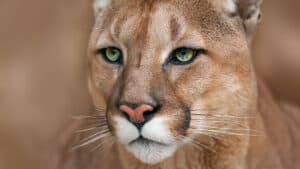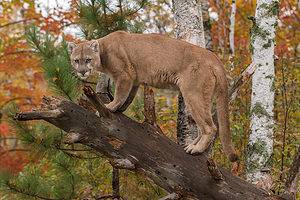A cougar, also known as a mountain lion or puma, is a large felid of the subfamily Felinae native to the Americas. Cougars are carnivores and typically eat small animals such as rabbits and birds and occasionally larger animals, like deer. They are solitary animals that live in areas with dense vegetation cover and abundant prey.
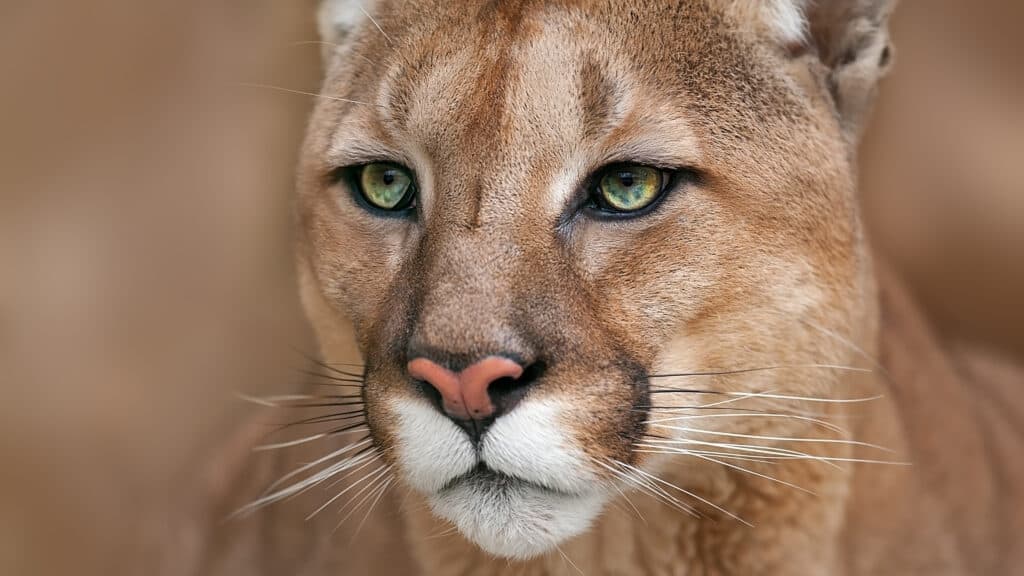
The largest cougar ever caught in California was caught on New Year’s Day in 1953.
©iStock.com/Nemyrivskyi Viacheslav
Wildlife In California
California is a massive state, stretching over 1,000 miles from north to south and along the Pacific Coast. As such, it boasts an array of unique animals that thrive in warm climates. The tule elk are exclusively found only in California. However, other species like Columbia blacktail deer, Roosevelt’s elk, and even cougars have all made appearances on the records list for the biggest animals ever caught or seen within the state’s borders. In addition, California has seen record-sized black bears and desert sheep as well.
The Largest Cougar Caught In California
The largest cougar ever caught in California was killed by Warren C. Johnston in Ventura County on January 1st, 1953. The massive cougar was 8 13/16 feet long and over six feet wide. The total measurement was 15 and three sixteenth, which beat the existing record by only 3/16 of one inch!
The cougar was a male and weighed in at an impressive 200 pounds. It had a beautiful dark brown coat with faint black streaks, the perfect camouflage for hunting its prey in the dense forests of Ventura County. Warren C. Johnston hunted this magnificent beast using only his bow and arrow. It took him 8 hours to track it down before eventually killing it on New Year’s Day, 1953. The animal he killed was so large that when measured from nose to tail, it broke the existing record.
Since 1953, however, there have been no records of any other cougars exceeding this size being caught or killed in California. Therefore, Warren C Johnston’s catch is truly remarkable. To commemorate his achievement, a plaque has been placed near where the animal was shot, which honors his amazing feat and celebrates the largest cougar ever taken out of California.
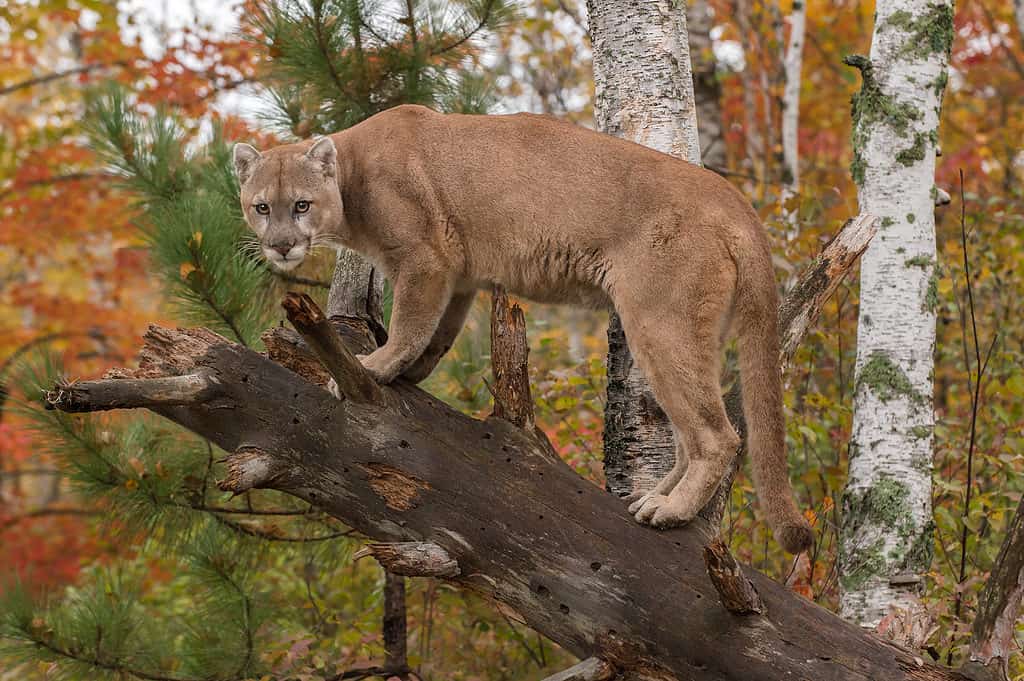
The largest cougar ever caught in California weighed in at 200 pounds.
©Geoffrey Kuchera/Shutterstock.com
World Record For Largest Cougar
In 1979, Douglas E. Schuk shot the record-breaking cougar (Felis concolor) on a cold February day in Canada. The skull of this animal measured 16-4/16 points and has held the world record for over 30 years. It is currently owned by Charles M. Travers.
On the day Schuk was hunting, his hounds had tracked a large cougar through 32 inches of snow in the Tatlayoko Lake region. The dogs cornered the cat, which was capable of killing the hounds with its powerful paws. Schuk quickly took a shot from his .308 rifle, killing the animal. This cougar was the largest ever caught in Canada and set a world record.
Charles Travers obtained the skull and was shocked when it was assessed to be 16-4/16, surpassing the former world record of 16 set by Garth Roberts in 1964 in Utah. The Schuk/Travers skull had to be presented to the Final Awards Judges Panel to which it was confirmed as the new world record cougar. However, since the skull was not owned by the hunter anymore, it was only eligible for a Certificate of Merit.
Gene R. Alford of Kamiah of Idaho almost broke the world record for the largest cougar ever caught when he hunted in the Selway-Bitterroot Wilderness. His cougar was only 1/16 of an inch short of Schuk’s record. However, he was awarded the Sagamore Hill Award in recognition of his unique hunting experience and his commitment to fair chase ethics.
In 1901, President Theodore Roosevelt set the previous record for catching the largest cougar near Meeker, Colorado. His trophy measured 15-12/16 points. Cougars can come in both gray and red colors. This North American wild cat has a wide range of colors.
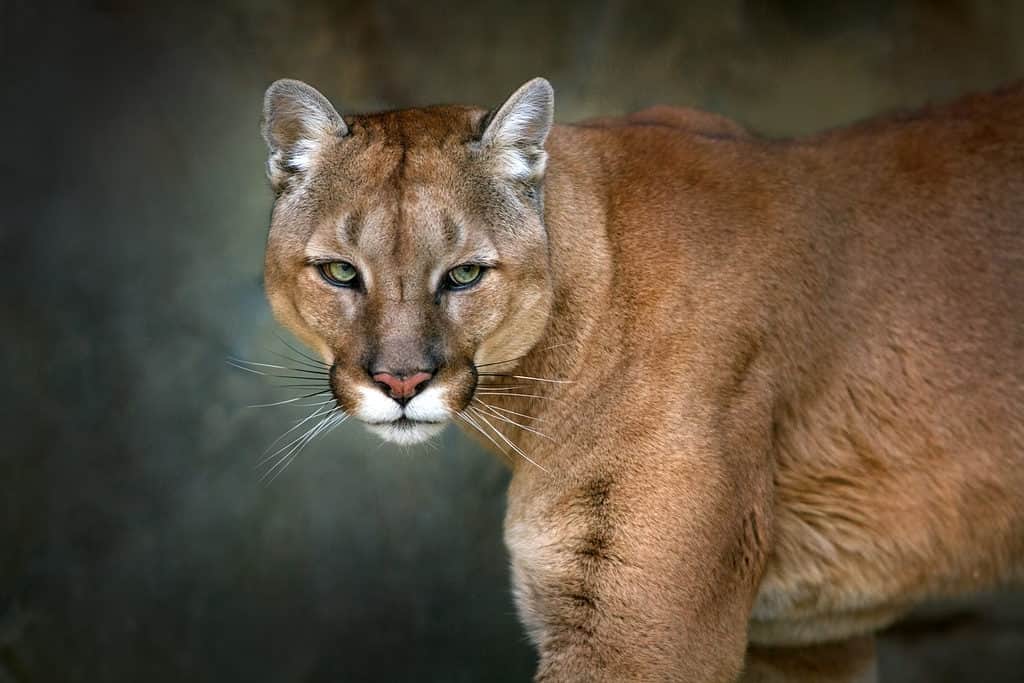
The largest cougar ever caught in California was 8 13/16 feet long and over six feet wide.
©Kwadrat/Shutterstock.com
Where Is Ventura County, California Located On A Map?
Ventura County is located on the southern coast of California and is comprised of multiple cities, some of which are Oxnard, Thousand Oaks, Camarillo, Ventura, and Ojai. The state of California is located in the Western United States along the Pacific Coast. It is bordered by the Pacific Ocean to the west, Oregon to the north, Arizona, and Nevada to the east, and the Mexican state of Baja California to the south.
Are Cougars Normally This Big?
Cougars are generally quite large animals, with males weighing up to 100 pounds and females averaging around 65 pounds. In California, the average size of a cougar is between 6-7 feet long and 4 feet tall at the shoulder. However, the largest cougar ever caught in California was eight feet long, making it an exceptionally large cougar.
Can Cougars Still Be Hunted In California?
The California Wildlife Protection Act of 1990 (Proposition 117) provides legal protections for mountain lions, making it illegal to hunt or even injure them.
Therefore, the hunting and trapping of cougars are not permitted in the state of California. However, exceptions are made if a depredation permit is issued to take a specific cougar that has killed livestock or pets. This is normally done in order to preserve public safety or protect bighorn sheep. Any decision around taking a cougar must be evaluated on an individual basis by the state using evidence such as photos and other forms of witness testimony. If approved under these conditions, then it can be hunted legally with appropriate licensing and regulations in place.
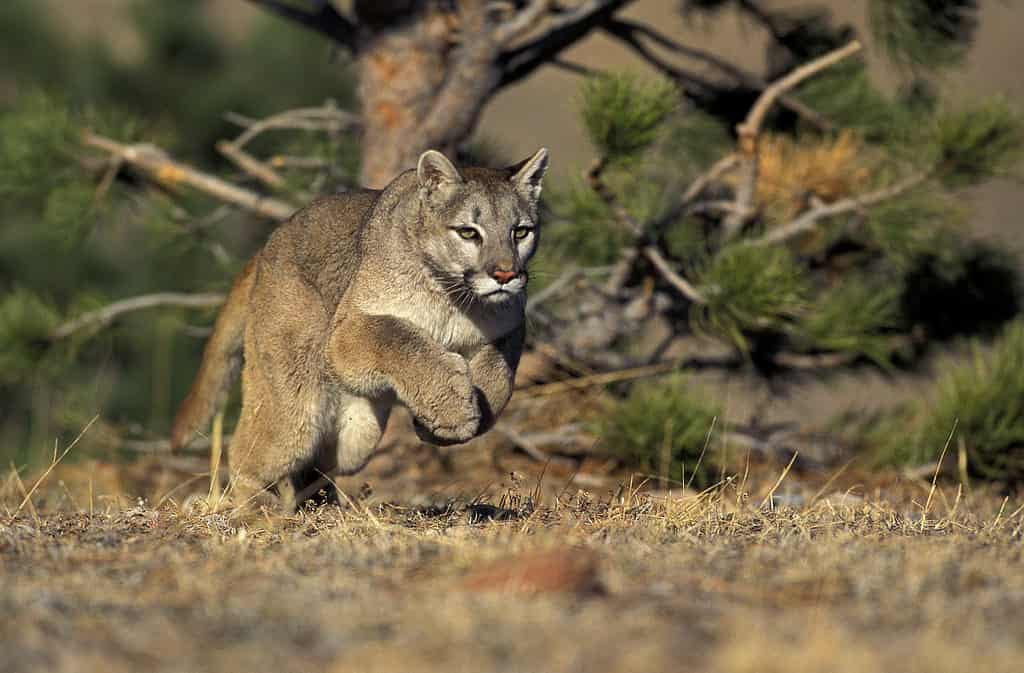
Cougars in California can no longer be hunted as of 1990.
©iStock.com/slowmotiongli
Are Cougars Endangered In California?
The California Endangered Species Act (CESA) lists cougars as a threatened species, however, their exact population size is unknown. To better understand the mountain lion population in California, studies have been conducted over the past forty years to estimate their density and distribution throughout different habitats in the state.
It is estimated that there were between 2,000-3,000 mountain lions statewide. In 1996, the estimated number was 6,000, showing a sharp decline. However, due to habitat destruction and human encroachment on cougar territories, this number has likely decreased more than we know, as tracking and counting them is a complex task. Therefore, the record for the largest cougar ever caught in California won’t be broken.
What Do Cougars Eat?
Mountain lions or cougars are apex predators and one of the most wide-ranging mammals in California. In addition to deer, their primary food source, they also eat smaller animals such as rabbits, rodents, hares, birds, and even reptiles and fish.
In areas where deer are scarce, they may be forced to switch up their diet with domestic livestock and pets. Mountain lions will often use ambush tactics for hunting prey and can climb trees in order to gain a better vantage point for hunting. Cougars have an incredible sense of smell which helps them locate prey from great distances away.
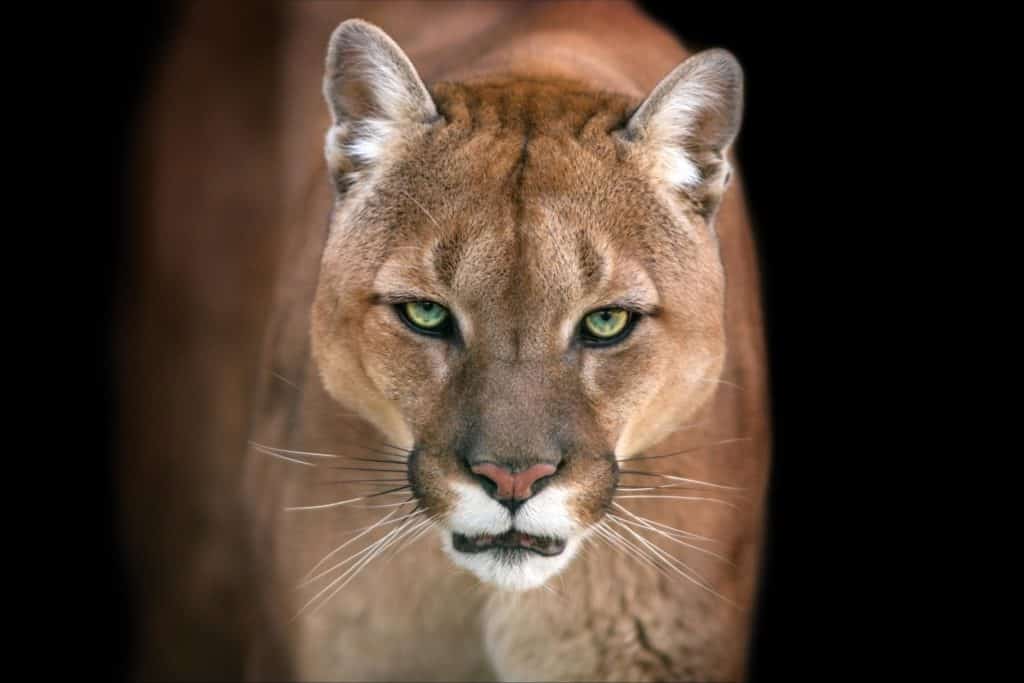
Cougars are considered a threatened species, meaning their population in California has drastically declined.
©Kwadrat/Shutterstock.com
Do Cougars Attack People?
Attacks on humans by cougars are rare. It is much more likely for someone to be struck by lightning than attacked by a mountain lion (over a thousand times more likely, actually). In the state of California, since 1890, there have been only a few confirmed cases of cougar attacks on humans, and six of them resulted in death. Usually, the person who was attacked was alone when it happened.
Residents of areas with mountain lions can take steps to reduce the chances of a cougar encounter. By making their environment unattractive to deer, the primary food source of cougars, they can discourage lions from coming close. In addition, removing thick foliage and putting in outdoor lighting will make it harder for a mountain lion to get close without being seen.
The photo featured at the top of this post is © iStock.com/SandmanXX
Thank you for reading! Have some feedback for us? Contact the AZ Animals editorial team.



